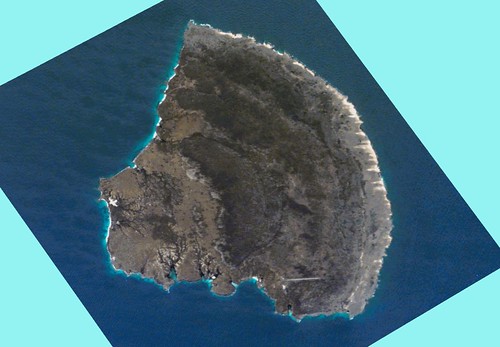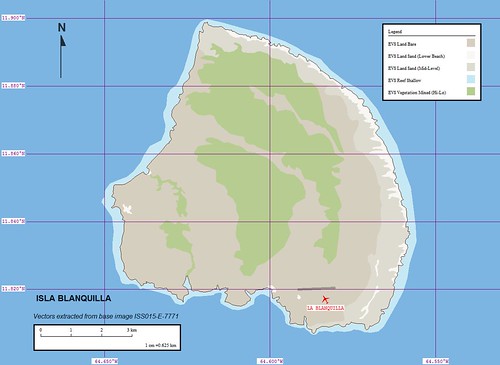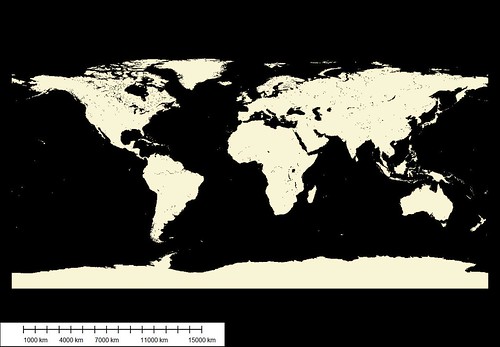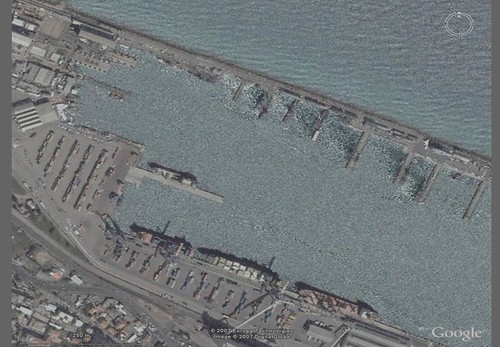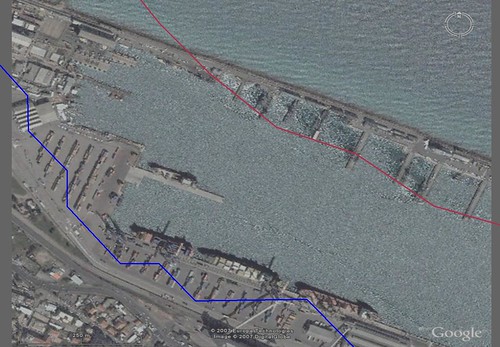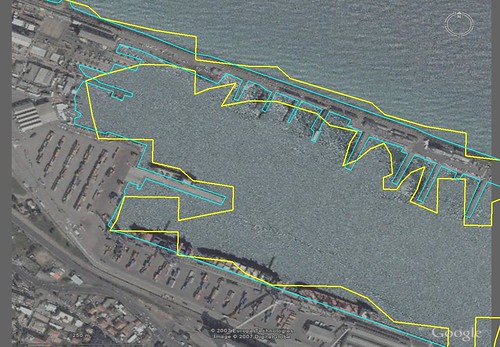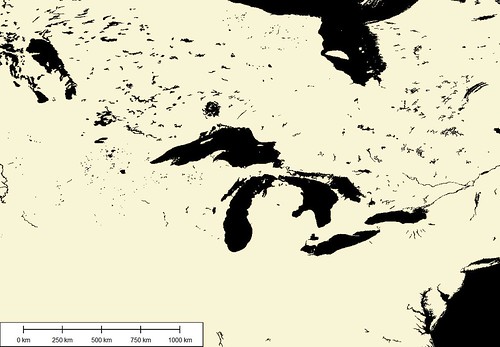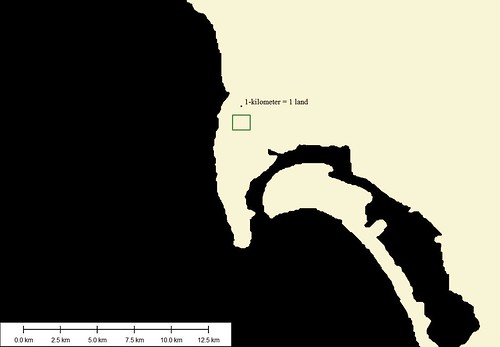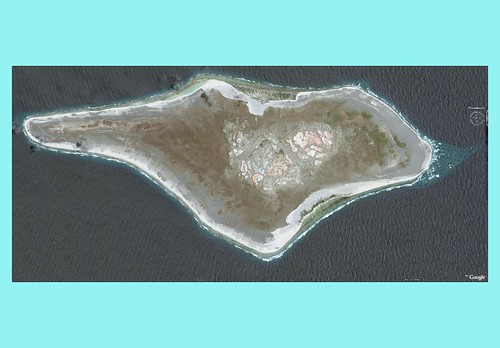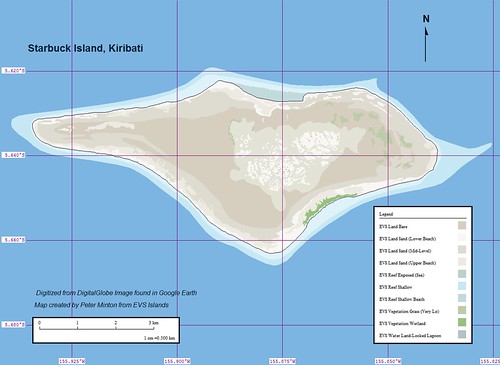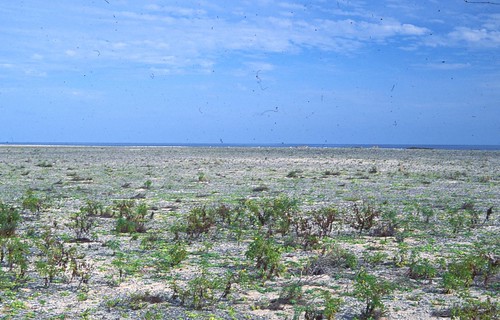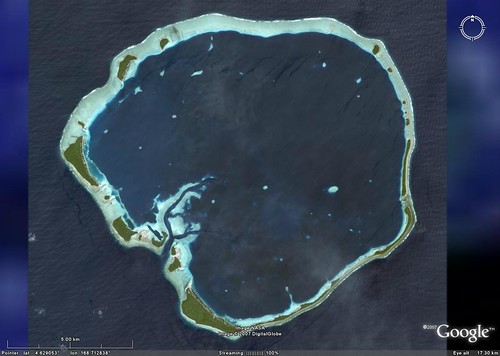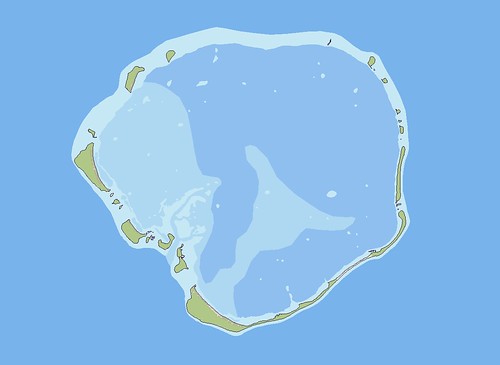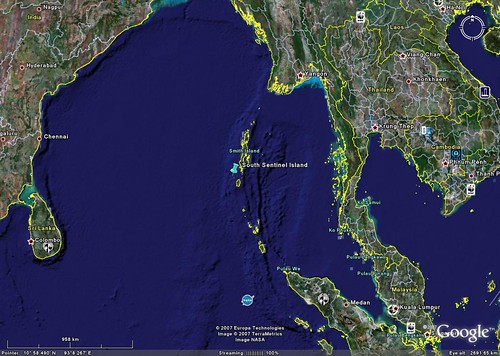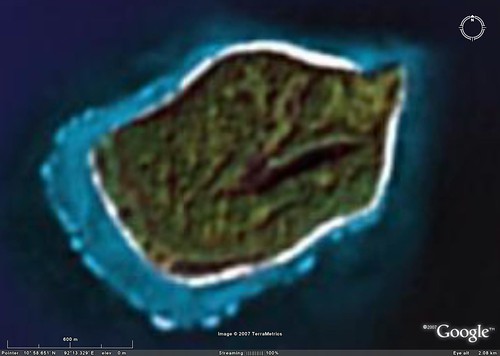My previous post elicited a question asking which image was georectified properly and wondering if I had verified the projection. I am a trusting soul and if, in the instance of my previous post, the NGA PGS vector coordinates are what I used to georectify the ISS image. I am reasonably confident the ISS image fit precisely into the NGA PGS vectors. Ultimately the ISS image I fashioned used a Geographic (latitude/longitude) projection with WGS-84 datum.
This evening I loaded the Landsat ETM+ orthorectified mosaic N-20-10_2000, which includes Isla Blanquilla, into Global Mapper. It loaded quickly. I zoomed into Isla Blanquilla at a scale of 1:62,5000, which was the scale of my final map project. I then loaded the ISS georectified base image of Isla Blanquilla on top of the Landsat image. It is right on! A precise fit. However, yesterday when I attempted to create an overlay of the ISS image in Google Earth and after spending 15-minutes stretching and twisting the image, it never quite fit. It was alway alittle off.
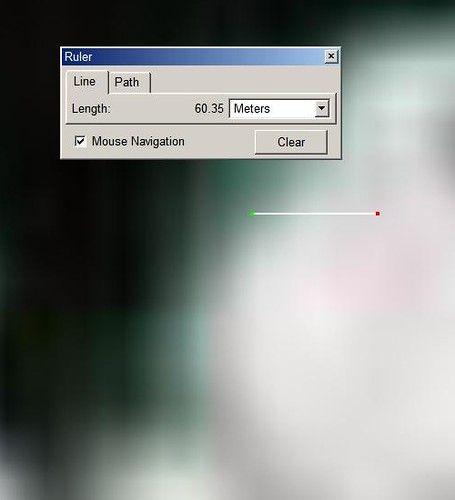
Google Earth to Landsat ETM+ Georectification Offset
This evening, I recorded the lat/lon location of three relative ground control points within Google Earth and in Global Mapper's Landsat display. They each showed the same image of Isla Blanquilla and supposedly at the same location. Each relative ground control point was easily discernible. After recording lat/lons for each point and determining the difference, it seems someone is off anywhere between 2-meters and up to 63-meters for this single island. So, who is it? Who has misplotted this island? Is it Google Earth or Landsat ETM+? Care to guess?
Enjoy!

